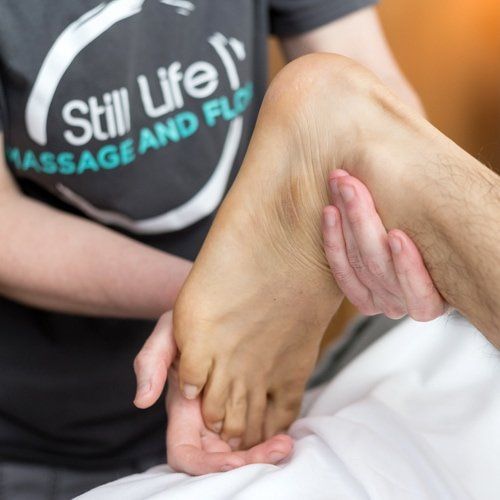Neuromuscular Therapy
What is Neuromuscular Therapy?
In the last 60 years, Neuromuscular Therapy (NMT) has emerged as a significant way to assess, treat and prevent soft-tissue injuries and chronic pain. Today, NMT is widely used not only in the treatment rooms of massage therapy but also in occupational therapy, physical therapy, nursing, dentistry, chiropractic, osteopathic and physical medicine clinics worldwide.
It’s important to distinguish between NMT and deep tissue massage. Deep tissue massage releases chronic patterns of tension in the body through slow strokes and deep finger pressure on the contracted areas, either following or going across the grain of muscles, tendons, and fascia. It’s also called “deep tissue” because it focuses on the deeper layers of muscle tissue. Put broadly, NMT is a series of treatment protocols based on the practitioner’s skill, anatomy knowledge, and precise palpatory application. NMT differs from regular, relaxation massage because it not only deals with the muscles, ligaments, and soft tissues of the body but also with the nervous system. (Hence the term “neuromuscular,” which literally means “of, relating to or affecting both nerves and muscles.”)
Working as it does with the central nervous system, NMT is a great manual therapy to use for people in a large amount of pain; many times, direct, deep pressure can’t be applied to help relieve pain. By using techniques inherent to NMT, a therapist can work someone’s painful area effectively, without causing them further pain. By using the nervous system synergistically with the muscles, the therapist can create a situation whereby the body becomes “tricked” into not feeling pain as sensitively, thereby allowing them to work an area that would otherwise be too painful to work.
Neuromuscular therapy seeks to eliminate pain, chronic or acute, by addressing five key elements that cause pain:
- Ischemia: the lack of blood flow to soft tissues that causes hypersensitivity to touch.
- Trigger points: highly irritated points in muscles that refer pain to other parts of the body.
- Nerve entrapment/compression:pressure on a nerve by soft tissue, cartilage or bone.
- Postural distortions: imbalance of the muscular system resulting from the movement of the body off the longitudinal and horizontal planes. Longtime poor postural habits are the most common cause of pain from this element.
- Biomechanical dysfunction: imbalance of the musculoskeletal system resulting in faulty movement patterns (i.e., poor lifting habits, computer keyboarding, bad mechanics in a golf swing or tennis stroke).


